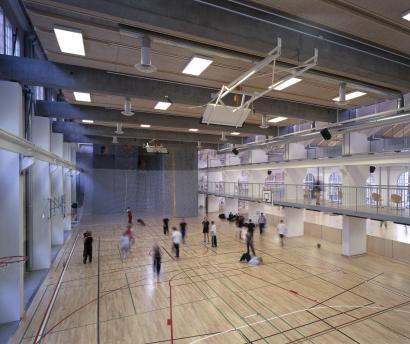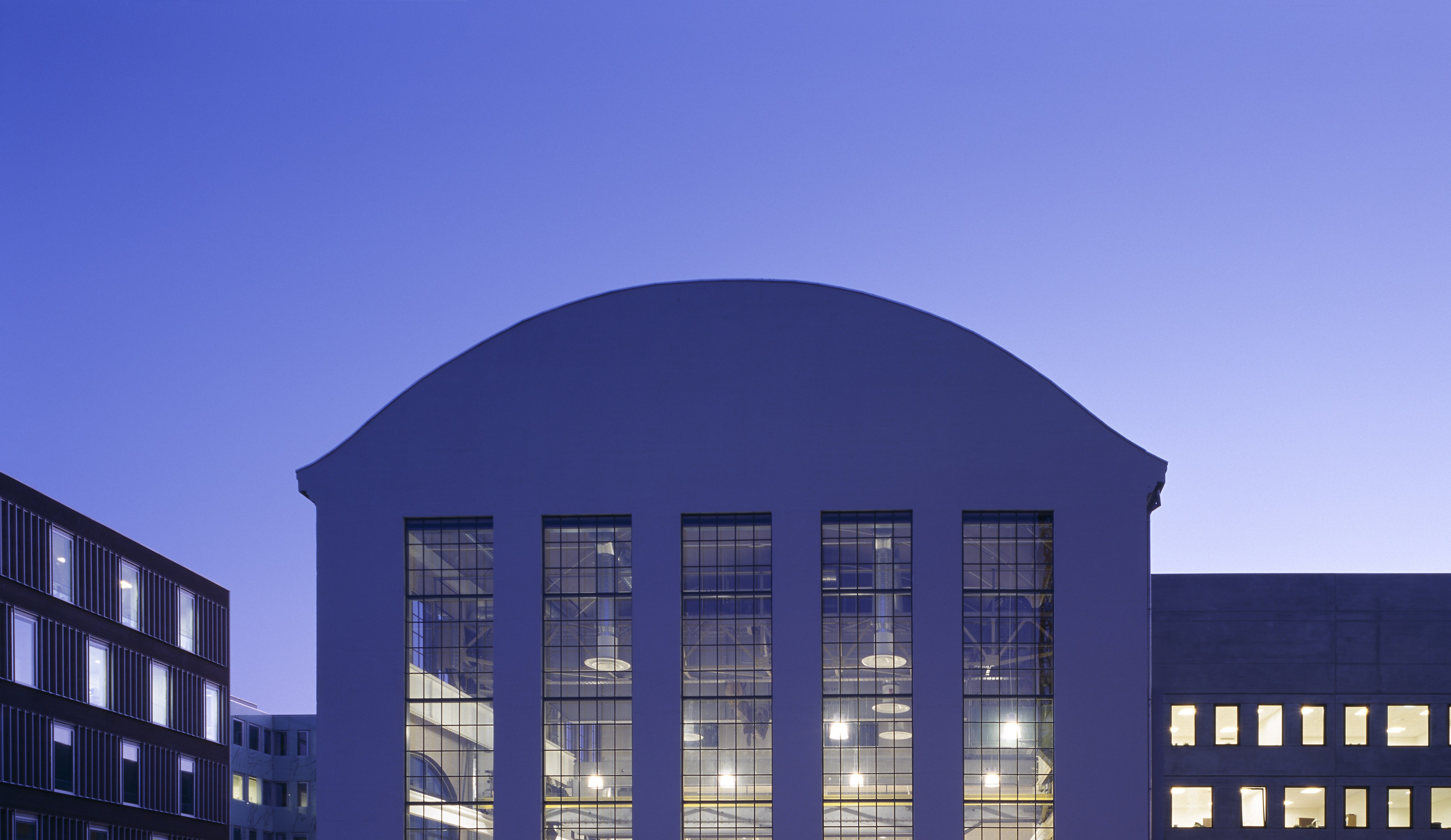DGU Huset
DGI-Huset in Aarhus was completed in 2003 following a sweeping transformation from being the former central workshop of the Danish State Railways to a sports centre. The sports centre is designed by architectural firms Schmidt Hammer Lassen and 3XN Architects.
The users of DGI-Huset experience the settings as both positive and inspiring with an optimum physical environment for engaging in sports and is the primary reason why a new type of user has started using the sports centre. Before the centre opened, around 50 % of the users had not engaged in regular sports in a sports centre.
Accessibility & Health
Before the opening of DGI-Huset in Aarhus, 11 % of its current users did not do any kind of sports and 39 % only engaged in individual sports, i.e. swimming, running or cycling. The centre became a success because it united the popular aspects of sports offered by sports associations with individual sports, which means that the users can be relaxed, serious and social when they do their sport. DGI-Huset’s wide appeal has therefore attracted new user groups that come from both associations and more individualistic sports. This is revealed in an evaluation of DGI-Huset prepared by NIRAS in 2005.
Indoor Climate & Preservation Worthiness
The evaluation of DGI-Huset shows that as many as 89 % of the users are satisfied or very satisfied with the facilities offered by the sports centre. They experience the open and integrated environment as both positive and inspiring with optimum physical settings for their sport. The transparent section of the building and footbridges between the activity spaces of the halls have inspired several users to try new types of sport. The users praise the sports centre for its functionality and, in particular, its aesthetics.

About the case
The sports areas in DGI-Huset have been created in three joined industrial workshops from 1910, which used to house the central workshop of the Danish State Railways in Aarhus. Today, the halls feature visible structures, robust materials and large, open spaces. New balconies and footbridges made of steel connect the various spaces and create a contrast to the old brick details of the building. The sports centre is used for a range of different sports and activities, both individual and team sports. The sports centre has gained many new members who have never used a sports centre before. The place is praised for its diversity and inclusiveness and its atmosphere, which is the primary reason why the new group of users has started using the sports centre, concludes an evaluation prepared by NIRAS in 2005.
